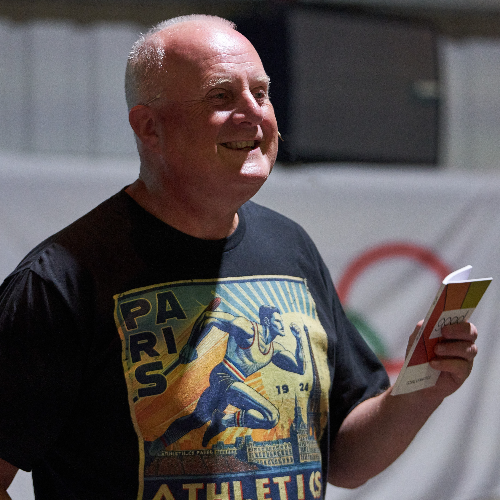-
War And Peace.
Contributed by Gordon Curley on Nov 27, 2023 (message contributor)
Summary: 'War & Peace' - Isaiah chapter 11 verses 1-16 - sermon by Gordon Curley (PowerPoint slides to accompany this talk are available on request – email: gcurley@gcurley.info)
SERMON OUTLINE:
A vision of the saviour (vs 1-5)
A picture of peace (vs 6-9)
A story of power (vs 10-16)
SERMON BODY:
Ill:
• If you google the words, “War & Peace.”
• The suggested pages it brings up relate to the novel by Leo Tolstoy.
• Which is one of the longest and most famous books in history.
• It tells the story of Russian aristocrats during and after the Napoleonic Wars.
• The epic novel features hundreds of characters (559 in total),
• Numerous plot threads,
• And it has a battle sequence that lasts more than 20 chapters,
• The 1300 pages will take about 60 hours for a live reading.
• So, you could say it is the literary equivalent of a marathon.
• TRANSITION: Those words, ‘war and peace’ are sadly the yo-yo history of humanity.
• And in our studies in the book of Isaiah war has been a feature.
• Assyria the super-power of the Middle East was making war on everyone,
• They would get to the gates of Jerusalem and would have easily taken the city,
• But God will send a plague upon the Assyrian army and destroy it.
Quote: Chapter 10 verses 33–34:
“See, the Lord, the Lord Almighty,
will lop off the boughs with great power.
The lofty trees will be felled,
the tall ones will be brought low.
He will cut down the forest thickets with an ax.
Lebanon will fall before the Mighty One.”
The picture in those verses is dramatic and destructive.
• What was a huge forest of trees,
• Will look like a field of jagged tree stumps.
• The forest of trees was Assyria chopped down by the axe of God.
• It is a picture of defeat and destruction, a picture of hopelessness.
• The illustration also fits the people of God,
• Israel the Northern Kingdom and Judah the Southern Kingdom,
• Are also like trees that have been felled, conquered territories.
Note:
• Isiah the prophet continues that idea of trees (chapter 10 verse 34),
• And uses the illustration of a branch (vs 1) to bring hope, restoration, and victory.
• Isaiah prophesies the coming of the Messiah as, “a shoot from the stump of Jesse.”
Ill:
• This is a very clever illustration regarding trees.
• Both Assyria and Israel are compared to trees.
• Assyria is compared to a cedar tree.
• Israel to a deciduous tree (e.g., an oak tree. Isaiah chapter 6 verse 11-13)
• Assyria the cedar trees which are forest giants, growing up to 200 feet (61 m.) tall.
• But inside the Cedar tree they what is called, ‘a dead zone’ in the center of the canopy.
• Even if you prune them wrong you end up killing them.
• So, these forest giants are impressive to look at but once felled they stay dead!
• Israel the deciduous tree,
• Its roots can survive being cut down and from that type of deciduous tree,
• A shoot and then a branch and in time another tree will replace the previous one.
• TRANSITION: Isaiah says, a shoot will come from a felled tree trunk.
• But it will come from one particular stump in the forest.
• From the root of Jesse, which is the same stump that King David grew from.
(1). A vision of the saviour (vs 1-5)
• In these verses we are told three great truths about the coming saviour.
• Three prophetic facts concerning The Messiah.
FIRST: HIS ANCESTRY (VS 1).
“A shoot will come up from the stump of Jesse.
from his roots a Branch will bear fruit.”
Ill:
• The movie A Knight's Tale, set in medieval England,
• It tells the story of a young would-be knight named Ulrich.
• Who attempts to secure his place in history by winning a famous tournament.
• But there is a problem, in those days, in order to become a knight.
• You had to be descended from noble stock.
• And Ulrich does not have a drop of royal blood in him.
• That does not put Ulrich off, and he makes it through to a tournament,
• But then the problem arises,
• It is traditional for the knight's squire to introduce him at such tournaments,
• Usually delivering a grandiose recitation of the knight's royal lineage.
• In this scene, Ulrich's squire is a young Geoffrey Chaucer (the English poet).
• Chaucer uses all his verbal skills to crank up the hype for his master Ulrich.
• The people in the audience smile as Chaucer makes his speech.
“I cannot look upon my Lord Ulrich, for I weep to see his shining face. My Lord is a gift to your eyes, for we shall never, ever see his life upon this Earth again. I would list his lineage if it served to honor him. Most men here—it's sad, but it's true—they look to their past to prove their worth; they look to the deeds of their fathers.

 Sermon Central
Sermon Central



